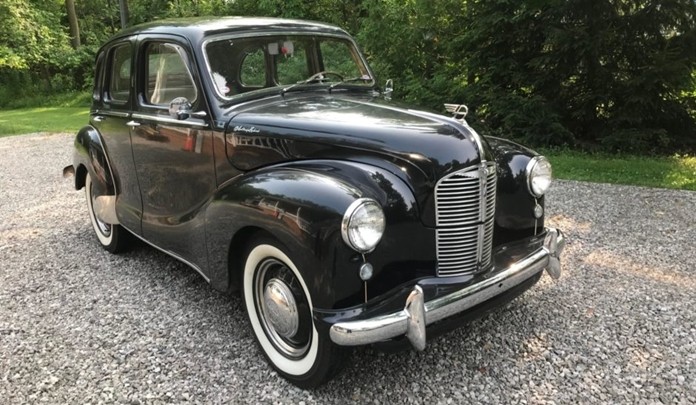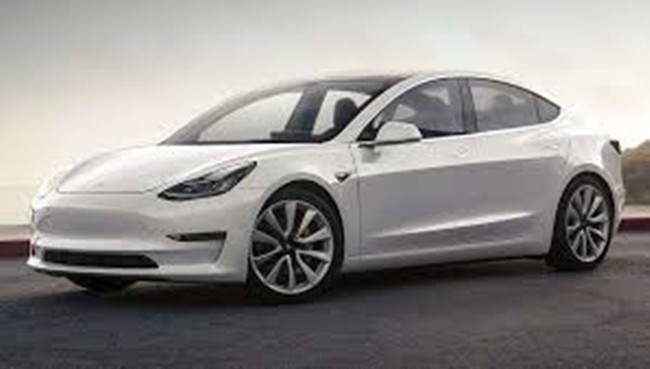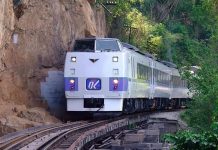Ankara, Turkey (AP) — Turkish President Recep Tayyip Erdogan on Friday unveiled prototypes of a domestically produced electric car, putting him closer to fulfilling a long-held dream of building Turkey’s first “national” automobile.
Erdogan showcased the SUV and sedan models of the car, known for now as TOGG after a consortium of Turkish companies that will produce them, at a ceremony in Gebze, in Turkey’s northwestern industrial heartland.
The president was scheduled to test drive a car across a suspension bridge over the Gulf of Izmit. He offered to put his name down on a possible list for advance orders. The Turkish vehicles are expected to hit the market in 2022.
“We are witnessing a historic day, realizing a 60-year dream,” Erdogan said. “I know that our people is impatiently waiting for the day they can own this car.”
The Turkish leader has long pushed industrialists to build a domestic automobile as part of his vision for making Turkey an economic powerhouse.
The vehicle is being produced by a consortium of five Turkish companies called the Automobile Initiative Group of Turkey, or TOGG, in cooperation with the Turkish Union of Chambers and Commodity Exchanges.
Turkish media reports said the car was designed by Italy’s Pininfarina design company, which has created models for Ferrari and California-based electric car maker Karma.
Erdogan said the cars would be produced in a factory to be built on former military-owned land in the province of Bursa. The factory, scheduled to be completed in 2021, is expected to employ 4,300 people.
TOGG chief executive Gurcan Karakas said Turkey hopes to produce five different models of the car within 15 years.
The TOGG is Turkey’s second effort to produce a Turkish-made automobile. During the 1960s, a group of Turkish engineers built prototypes of a car called Devrim, or Revolution in English. The project was later abandoned.
Several foreign brands, including Ford and Toyota, are assembled in Turkey.
Unfortunately, this item is not accurate. Turkey also built a domestic car called the Anadol. This was produced from 1966 to 1991.
Introducing a bit of culture into the column
Satnav by Pam Ayres
I have a little Satnav, It sits there in my car
A Satnav is a driver’s friend, it tells you where you are.
I have a little Satnav, I’ve had it all my life
It’s better than the normal ones, my Satnav is my wife.
It gives me full instructions, especially how to drive
“It’s sixty miles an hour,” it says, “You’re doing sixty five.”
It tells me when to stop and start, and when to use the brake
And tells me that it’s never ever, safe to overtake.
It tells me when a light is red, and when it goes to green
It seems to know instinctively, just when to intervene.
It lists the vehicles just in front, and all those to the rear
And taking this into account, it specifies my gear.
I’m sure no other driver, has so helpful a device
For when we leave and lock the car, it still gives its advice.
It fills me up with counseling, each journey’s pretty fraught
So why don’t I exchange it, and get a quieter sort?
Ah well, you see, it cleans the house, makes sure I’m properly fed
It washes all my shirts and things, and keeps me warm in bed!
Despite all these advantages, and my tendency to scoff
I only wish that now and then, I could turn the bugger off.
Some of the worst cars of the last 50 years
A friend of mine sent me an item about the 10 best cars in the past 50 years, and obviously there would be many different ideas from the enthusiasts. Unfortunately, for many people, they are only guessing, because just how many of the readers have actually driven a Porsche GT3, or even a Porsche Targa?
My friend, of course, was having a gentle, but not so subtle, dig at me for being a motorist for too many years. I have to admit that I started driving in the 1950s, and I also have to admit that it was my father’s car, and he didn’t know about the mischief I would get up to when my parents were away for the weekend. The car? A 1939 Austin 12, made at the beginning of the war. Remember that war? That was the one the Germans lost, so they could come back later and take over Rolls-Royce, Bentley and Mini. What was left, like MG and Rover ended up in China.
But back to Dad’s Austin 12. It was a large four door family saloon produced by the Austin Motor Company and was launched in August 1939 and produced until replaced in 1947 by the similar sized but larger engined Austin A70 Hampshire. With beam axles front and rear and mechanical brakes, it was more comfortable at rest than when in motion. It would not pass any of today’s design rules. Definitely one of the worst cars I have ever driven.
My first ‘real car’ which was mine and mine only, was a 1949 Austin A40 and was 10 years old when I took ownership. It was not a good buy, blowing up after two weeks. These days I would be more careful in pre-ownership checks. However, it was repaired and did serve me for the next 10,000 miles without too many hiccups. But it was painfully slow.

The A40 was actually considered a power machine in its day. A 1.2 litre straight-4 OHV engine produced 40 bhp (30 kW) at 4200 rpm. It also had front coil sprung independent suspension but retained a rigid axle and semi elliptic leaf springs at the rear. The Girling brakes with 9 in (229 mm) drums were operated hydraulically at the front and mechanically at the rear.
An A40 tested by The Motor magazine in 1948 had a top speed of 70 mph (110 km/h) and could accelerate from 0-60 mph (97 km/h) in 37.2 seconds. Read that again – 37.2 seconds! To record those sorts of times, I think they probably had to use a calendar! Another in the ‘worst car’ category? Well, certainly in the slowest car category.
Autopilot in trouble again
3 crashes, 3 deaths raise questions about Tesla’s Autopilot
Detroit (AP) — Three crashes involving Teslas that killed three people have increased scrutiny of the company’s Autopilot driving system just months before CEO Elon Musk has planned to put fully self-driving cars on the streets.
On Sunday, a Tesla Model S sedan left a freeway in Gardena, California, at a high speed, ran a red light and struck a Honda Civic, killing two people inside, police said.
On the same day, a Tesla Model 3 hit a parked fire-truck on an Indiana freeway, killing a passenger in the Tesla.
And on Dec. 7, yet another Model 3 struck a police cruiser on a Connecticut highway, though no one was hurt.
The special crash investigation unit of the National Highway Traffic Safety Administration is looking into the California crash. The agency hasn’t decided whether its special-crash unit will review the crash that occurred Sunday near Terre Haute, Indiana. In both cases, authorities have yet to determine whether Tesla’s Autopilot system was being used.
NHTSA also is investigating the Connecticut crash, in which the driver told police that the car was operating on Autopilot, a Tesla system designed to keep a car in its lane and a safe distance from other vehicles. Autopilot also can change lanes on its own.
Tesla has said repeatedly that its Autopilot system is designed only to assist drivers, who must still pay attention and be ready to intervene at all times. The company contends that Teslas with Autopilot are safer than vehicles without it, but cautions that the system does not prevent all crashes.
Even so, experts and safety advocates say a string of Tesla crashes raises serious questions about whether drivers have become too reliant on Tesla’s technology and whether the company does enough to ensure that drivers keep paying attention. Some critics have said it’s past time for NHTSA to stop investigating and to take action, such as forcing Tesla to make sure drivers pay attention when the system is being used.
NHTSA has started investigations into 13 Tesla crashes dating to at least 2016 in which the agency believes Autopilot was operating. The agency has yet to issue any regulations, though it is studying how it should evaluate similar “advanced driver assist” systems.
“At some point, the question becomes: How much evidence is needed to determine that the way this technology is being used is unsafe?” said Jason Levine, executive director of the nonprofit Center for Auto Safety in Washington. “In this instance, hopefully these tragedies will not be in vain and will lead to something more than an investigation by NHTSA.”
Levine and others have called on the agency to require Tesla to limit the use of Autopilot to mainly four-lane divided highways without cross traffic. They also want Tesla to install a better system to monitor drivers to make sure they’re paying attention all the time. Tesla’s system requires drivers to place their hands on the steering wheel. But federal investigators have found that this system lets drivers zone out for too long.
Tesla plans to use the same cameras and radar sensors, though with a more powerful computer, in its fully self-driving vehicles. Critics question whether those cars will be able to drive themselves safely without putting other motorists in danger.
Doubts about Tesla’s Autopilot system have long persisted. In September, the National Transportation Safety Board, which investigates transportation accidents, issued a report saying that a design flaw in Autopilot and driver inattention combined to cause a Tesla Model S to slam into a fire-truck parked along a Los Angeles-area freeway in January 2018. The board determined that the driver was overly reliant on the system and that Autopilot’s design let him disengage from driving for too long.

In addition to the deaths on Sunday night, three U.S. fatal crashes since 2016 — two in Florida and one in Silicon Valley — involved vehicles using Autopilot.
David Friedman, vice president of advocacy for Consumer Reports and a former acting NHTSA administrator, said the agency should have declared Autopilot defective and sought a recall after a 2016 crash in Florida that killed a driver. Neither Tesla’s system nor the driver had braked before the car went underneath a semi-trailer that had turned in front of the car.
“We don’t need any more people getting hurt for us to know that there is a problem and that Tesla and NHTSA have failed to address it,” Friedman said.
In addition to NHTSA, states can regulate autonomous vehicles, though many have decided they want to encourage testing.
In a statement, NHTSA said it relies on data to make decisions, and if it finds any vehicle poses an unreasonable safety risk, “the agency will not hesitate to take action.” NHTSA also has said it doesn’t want to stand in the way of technology given its life-saving potential.
 |
 |
 |





